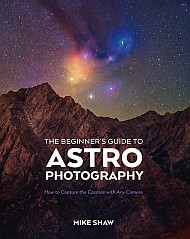Astronomy
Best space flight simulation games, ranked
Binary star systems are complex astronomical objects − a new AI approach could pin down their properties quickly
Krasheninnikov Volcano Erupts in Russia after Nearby Magnitude 8.8 Earthquake
The Krasheninnikov volcano, located less than 150 miles away from the epicenter of Russia’s July 29 earthquake, began erupting on August 3
Sunrise hits SpaceX's Crew-11 rocket on the pad | Space photo of the day for August 4, 2025
Space hurricanes are real — and they wreak more havoc than we thought
'Universal' detector spots AI deepfake videos with record accuracy
'Universal' detector spots AI deepfake videos with record accuracy
What if Infinity Didn’t Exist?
Can “finitism” possibly describe the real world?
Rocket Lab launches private Japanese radar satellite to orbit from New Zealand (video)
The James Webb Telescope May Have Found Primordial Black Holes
JWST observations of light sources before the first galaxies should have formed are raising new questions about our galactic origins
A Quick-Paced 15-Minute Stroll Every Day Could Help You Live Longer
The lowdown on the Environmental Protection Agency’s move to repeal of the “endangerment” finding. Also, how did a juicy ketchup ingredient help create a starchy tuber?
Mysterious boost to Earth's spin will make today one of the shortest days on record
Training robots from space
This summer, a team of robots explored a simulated martian landscape in Germany, remotely guided by an astronaut aboard the International Space Station. This marked the fourth and final session of the Surface Avatar experiment, a collaboration between ESA and the German Aerospace Center (DLR) to develop how astronauts can control robotic teams to perform complex tasks on the Moon and Mars.
The session introduced new levels of autonomy and complexity. NASA astronaut Jonny Kim operated two robots – ESA’s four-legged Spot and DLR’s humanoid Rollin’ Justin – to retrieve scattered sample containers and deliver them to a lander. Spot navigated the terrain autonomously, while Justin was guided through a mix of direct control and pre-set commands. This setup allowed Jonny to delegate tasks and focus on higher-level decisions, building on other sessions where robots required full teleoperation.
In a second scenario, ESA’s Interact rover transported DLR’s robot dog Bert to a cave entrance. After removing a boulder, Jonny deployed Bert, which then simulated a malfunction in one of its legs. Jonny had to retrain Bert’s walking algorithm in real time before it continued into the cave and detected signs of martian ice. This tested how operators respond to unexpected challenges and adapt robotic systems on the fly.
The robots are controlled from the International Space Station using a custom-built interface developed by ESA and DLR, combining a joystick and a haptic-feedback device. The interface allows switching between first-person view for immersive teleoperation and a top-down map for broader mission oversight. This flexibility lets the astronaut manage multiple robots efficiently, balancing direct control with strategic delegation.
Over four sessions, the Surface Avatar team has refined its approach to human-robot interaction, improving both teleoperation and task delegation to autonomous systems. The experiment has also helped to identify which tasks astronauts prefer to control directly and which can be safely handed over to robotic systems, offering valuable insight for future mission planning.
Read our blog to find out more.
SpaceX launches 28 Starlink satellites from Florida, lands rocket at sea (video)
The Future Of Astronomy Might Be On the Moon
But wait, before you build that moon casino we need to talk about a couple things. One, you really have to figure out how the roulette wheel is going to work in a low gravity environment. Second, we’re going to need you to keep the noise down.
Tracking Deep Space Probes With GEO Satellites Improves Uptime
In astronomy, larger distances are both a blessing and a curse. They can cause issues like longer communication times, which also requires more powerful equipment, and positioning uncertainty that can affect the outcomes of measurements, especially in the outer reaches of the solar system. However, they can also be useful for a specific type of measurement called interferometry, where two systems a far distance apart can provide accurate location measurements to a third system - the same principle that GPS uses. A new paper looks at potentially using the same technique to track deep space probes rather than cars on a freeway and finds that, while it is around the same accuracy level, it is able to provide that same location data for more than double the amount of time.
Spacecraft equipped with a solar sail could deliver earlier warnings of space weather threats to Earth’s technologies
Magnitude 3.0 Earthquake Rumbles New York City Less Than 2 Years after the Last Temblor
The magnitude 3.0 earthquake that shook the East Coast came nearly a year and a half after a magnitude 4.8 quake shocked New York City and its surroundings


